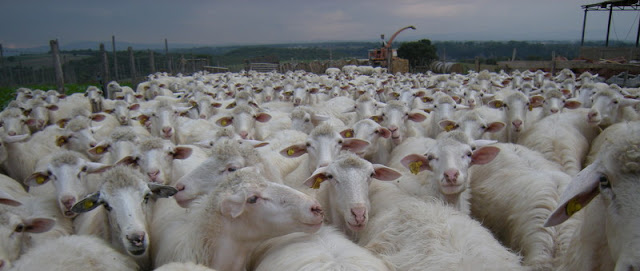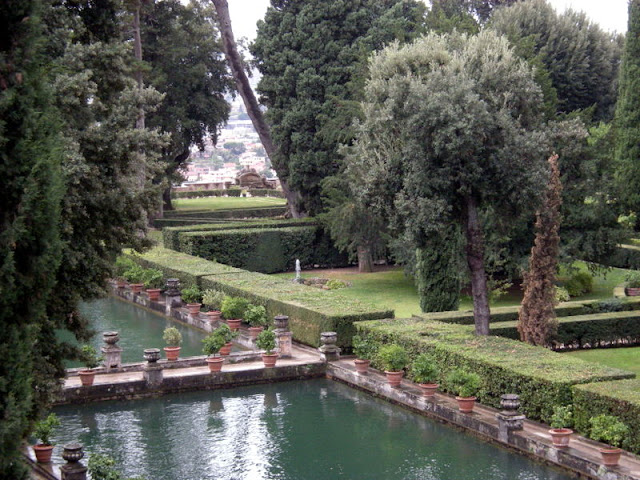VILLA ADRIANA
Van Villa d´Este naar Villa Adriana is slechts een klein stukje rijden met de auto.
Villa Adriana is iets heel anders, dit zijn de overblijfselen van, zeg maar een complete stad. Doordat dit complex hoofdzakelijk uit ruïnes bestaat, hangt er een bijzondere indrukwekkende sfeer. Gelukkig liet het weer zich nu van de goede kant zien. We lopen hier heel wat af want het terrein is mega groot. De cyclaampjes die in hoekjes bij oude muren in bloei staan, geven wat kleur aan het geheel.
From Villa d´Este to Villa Hadriana is only a short ride. Villa Hadriana is quite different, these are the remains of almost an entire city. as this complex consists mainly of ruins, there is a special atmosphere and is quite impressive. Fortunately the weather showed from her good side and we walked quite a bit because the terrain is mega-sized. Cyclamen flowering in corners near old walls gave colour to the whole.
Villa Adriana werd gebouwd vanaf 117 na Chr. als buitenverblijf van keizer Hadrianus. Het is de belangrijkste en meest gecompliceerde residentie uit de Romeinse oudheid op een terrein van bijna 120 ha. Keizer Hadrianus liet het volbouwen met de fraaiste gebouwen die hij op zijn reizen was tegengekomen. Het omvatte een keizerlijk paleis, badhuizen, bibliotheken, een zeetheater, tempels en uitgestrekte tuinen boordevol kunstwerken. Als we de verhalen mogen geloven was zijn meest geliefde plek de Romeinse Canopus, een marmeren vijver, omringd door zuilen en beelden.
Villa Adriana was built from 117 AD as residence of Emperor Hadrian. It is the most important and most complicated residence from ancient Rome on an terrain of almost 120 ha. They built here for Emperor Hadrian the grandest buildings he had seen on his travels. It included an imperial palace, bath houses, libraries, a sea theater, temples and extensive gardens full of art. If we can believe the stories his favorite place was the Roman Canopus, a marble pond surrounded by columns and statues.
Het is aannemelijk dat de keizers die Hadrianus opvolgden naar Tivoli bleven komen. Er zijn in elk geval bustes gevonden van Antonius Pius, Marcus Aurelius, Septimius Severus en Caracalla. Eind zesde eeuw raakte de Villa in vergetelheid en verviel tot een ruïneveld. In de Middeleeuwen kwamen er nog wel kunstenaars die er schetsen maakten en later identificeerde Flavio Biondo de ruïnes in 1461, als eerste sinds de oudheid, als de residentie van keizer Hadrianus, beschreven in de Historia Augusta.
It is likely that the emperors who succeeded Hadrian kept coming to Tivoli. In any case they found busts of Antonius Pius, Marcus Aurelius, Septimius Severus and Caracalla. At the end of the sixth century the Villa was forgotten and fell into ruin field. In the Middle Ages there were still artists drawing sketches and lateron in 1461 Flavio Biondo identified the ruins as the residence of Emperor Hadrian as the first one since ancient times, described in the Historia Augusta.
Vanaf de zestiende eeuw begonnen talloze opgravingen, eerst door architect Pirro Ligorio die bezig was met Villa d´Este en wel wat marmer van Villa Adriana kon gebruiken. Ook Renaissance architecten als Raphael en Borromini waren enthousiast en vooral beelden en mozaïeken waren erg gewild door grote verzamelaars van antiek. Tot in de 19de eeuw werd er systematisch geplunderd.
From the 16th century numerous excavations started, first by architect Pirro Ligorio who was working on Villa d'Este, he could use some marble from Villa Hadriana. Also Renaissance architects like Raphael and Borromini were enthusiastic and especially statues and mosaics were very popular by major collectors of antiques. Until in the 19th century there was plundered systematically.
In 1870 tenslotte kwam het terrein in handen van de Italiaanse staat, die opgravingen liet uitvoeren waarbij men de totale oppervlakte van het complex blootlegde. Er is nu ook geïnvesteerd in een betere bescherming van het terrein, men mag niet meer overal lopen. Toch blijven er nog genoeg raadsels over want archeologen zijn er tot dusver niet in geslaagd de functie van vele bouwwerken van de Villa vast te stellen. Er zijn heel veel verhalen maar als je er rondloopt, wordt er nog veel meer aan de verbeelding overgelaten.
Finally, in 1870 the terrain was taken over by the Italian State, which had carried out excavations whereby they exposed the total area of the complex. Now there is also invested in a better protection of the terrain, one is not allowed to walk anywhere. Nevertheless, there are still plenty of mysteries because archaeologists have not succeeded so far to identify the function of the many buildings of the Villa. There are many stories but when you walk around there is much more left to your imagination.
- waiting for cat to come out -
Het is inmiddels laat in de middag en tijd om weer op Rosa dei Venti (ons logeeradres) aan te gaan. Het wordt al vroeg donker in november, toch nemen we een touristische route. Aanvankelijk gaat dat prima, we rijden door een heuvellandschap met prachtige luchten en mooi avondlicht, maar dat is dus de stilte voor de storm. Weldra zien we de eerste lichtflitsen boven de heuvels en ja, donderslagen volgen. Na een tijdje barst de bui goed los, stortregen, donker, geknetter en gedonder, en tja... we rijden natuurlijk verkeerd. Na een vermoeiende rit van 3 uur (!) komen we over een pad vol bulten en gaten bij de schapenboerderij in Mazzano Romano aan, waar onze gastvrouw nog wat extra blokken hout op het vuur gooit, lekker warm.
In the meantime it is late in the afternoon and time to go back to Rosa dei Venti (our guesthouse).
It's getting dark early in November, yet we take a scenic route. Initially this is going fine, we drive through countryside with beautiful skies and beautiful evening lights, but that's the silence before the storm. Soon we see the first flashes of light above the hills and yes, thunder is following. After a while the storm is cracking apart, torrential rain, darkness, crackling and thunder, and yes...of course we take the wrong road. After a tiring drive of 3 hours(!) we arrive on a path full of bumps and holes at the sheepfarm in Mazzano Romano, where our hostess throws some extra logs on the fire, nice and warm.
Als we de volgende morgen uit het raam kijken, zien we dit vredige tafereel.
The other morning we see this peaceful scene from our room.
De schapen met jonge lammeren blijven bij de boerderij.
Sheep with young lambs stay near the farm.
Deze gaan 's morgens de weilanden in bewaakt door 3 Italiaanse herdershonden, genaamd Maremma's en komen 's avonds weer terug naar huis.
These are all going out to the lands in the morning, guarded by 3 Italian Maremma dogs and come back home in the evening.
Bedankt voor jullie leuke commentaar op mijn vorige posten en hierbij wens ik al mijn volgers en stille volgers een heel fijn weekend!
Janneke


















































